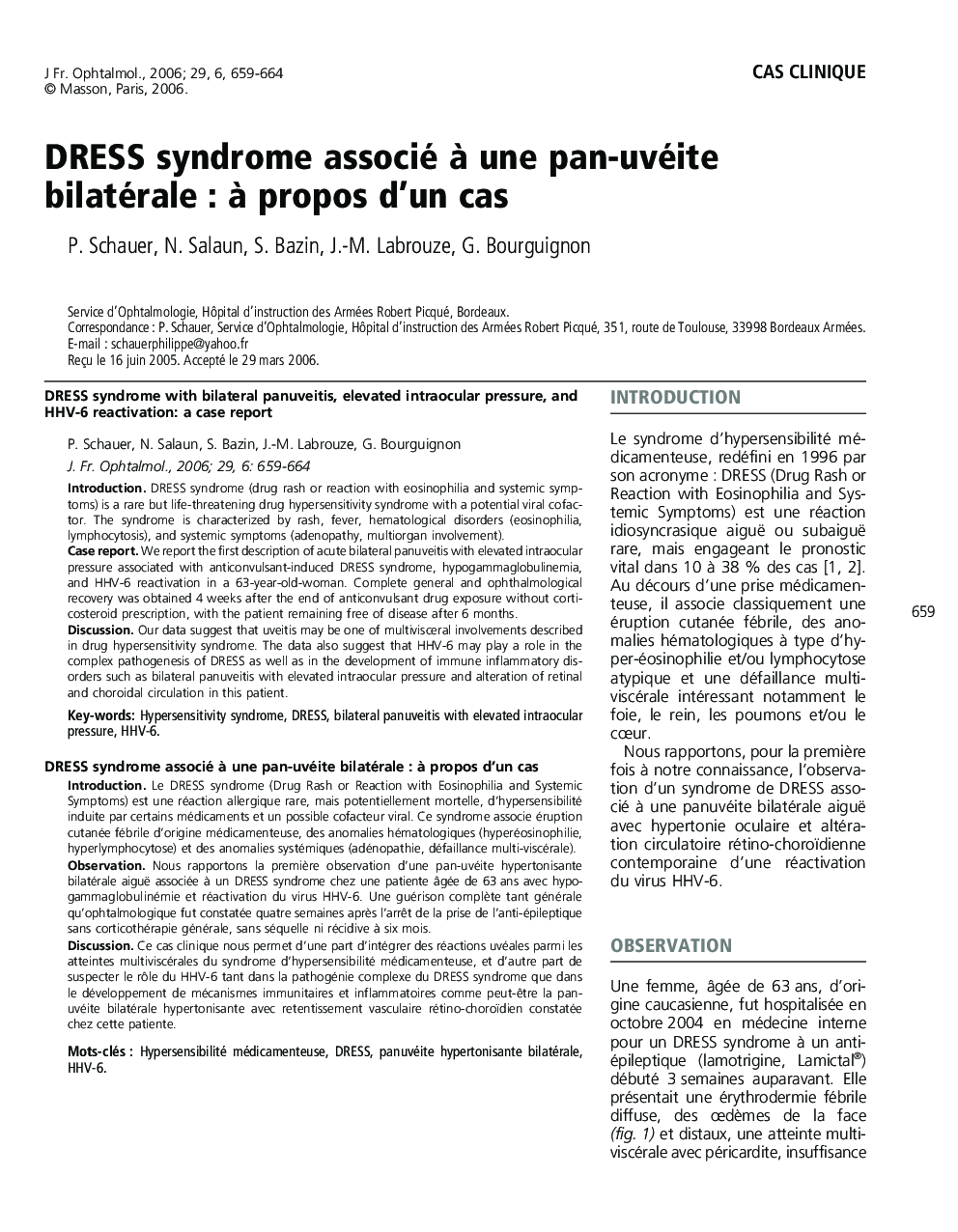| Article ID | Journal | Published Year | Pages | File Type |
|---|---|---|---|---|
| 4025242 | Journal Français d'Ophtalmologie | 2006 | 6 Pages |
IntroductionLe DRESS syndrome (Drug Rash or Reaction with Eosinophilia and Systemic Symptoms) est une réaction allergique rare, mais potentiellement mortelle, d'hypersensibilité induite par certains médicaments et un possible cofacteur viral. Ce syndrome associe éruption cutanée fébrile d'origine médicamenteuse, des anomalies hématologiques (hyperéosinophilie, hyperlymphocytose) et des anomalies systémiques (adénopathie, défaillance multi-viscérale).ObservationNous rapportons la première observation d'une pan-uvéite hypertonisante bilatérale aiguë associée à un DRESS syndrome chez une patiente âgée de 63 ans avec hypogammaglobulinémie et réactivation du virus HHV-6. Une guérison complète tant générale qu'ophtalmologique fut constatée quatre semaines après l'arrêt de la prise de l'anti-épileptique sans corticothérapie générale, sans séquelle ni récidive à six mois.DiscussionCe cas clinique nous permet d'une part d'intégrer des réactions uvéales parmi les atteintes multiviscérales du syndrome d'hypersensibilité médicamenteuse, et d'autre part de suspecter le rôle du HHV-6 tant dans la pathogénie complexe du DRESS syndrome que dans le développement de mécanismes immunitaires et inflammatoires comme peut-être la pan-uvéite bilatérale hypertonisante avec retentissement vasculaire rétino-choroïdien constatée chez cette patiente.
IntroductionDRESS syndrome (drug rash or reaction with eosinophilia and systemic symptoms) is a rare but life-threatening drug hypersensitivity syndrome with a potential viral cofactor. The syndrome is characterized by rash, fever, hematological disorders (eosinophilia, lymphocytosis), and systemic symptoms (adenopathy, multiorgan involvement).Case reportWe report the first description of acute bilateral panuveitis with elevated intraocular pressure associated with anticonvulsant-induced DRESS syndrome, hypogammaglobulinemia, and HHV-6 reactivation in a 63-year-old-woman. Complete general and ophthalmological recovery was obtained 4 weeks after the end of anticonvulsant drug exposure without corticosteroid prescription, with the patient remaining free of disease after 6 months.DiscussionOur data suggest that uveitis may be one of multivisceral involvements described in drug hypersensitivity syndrome. The data also suggest that HHV-6 may play a role in the complex pathogenesis of DRESS as well as in the development of immune inflammatory disorders such as bilateral panuveitis with elevated intraocular pressure and alteration of retinal and choroidal circulation in this patient.
